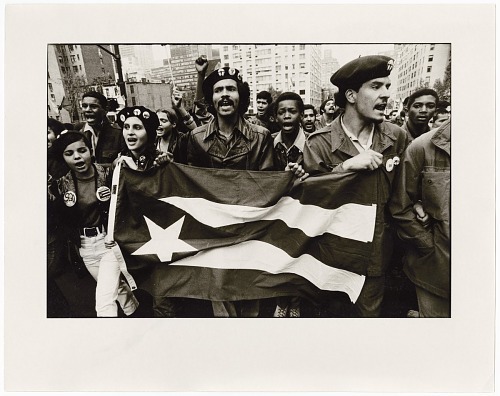Methodology
Why did you choose the subject matter and objects for your project?
I have a personal connection to The Young Lords; growing up in East Harlem and being half-Puerto Rican, my family lived through that time, and some were even involved with the group? I realized quickly that there was a limited amount of information on the movement even though it had a profound impact on New York City. Their “garbage offensive” forced the city to start picking up garbage in communities of color. I had trouble finding many archival images and items about the movement throughout this project but managed to find some. This is an example of how cultural heritage sites have dropped the ball in preserving such an important moment in Latinx history.
Where did you find your images and data?
Many of the Young Lords Movement's images and data are not available to the public because it lives in people’s own personal archives. My grandmother collected over 10 newspapers and kept them with her. This is the truth for many members and contributors to the movement; archiving back in the ’70s for many first- and second-generation immigrants was in the form of albums.
I started out searching The Young Lords Movement and came across some books but no collection items. I then focused my research on collections that I thought might have items from this movement because they were centered around or included Latinx History.
The images and information about this collection were gathered from several different sources, including:
- The Smithsonian National Museum of African American History under The Smithsonian Institution’s Terms of Use at https://www.si.edu/termsofuse.
- Special Collections and Archives, DePaul University Library in Chicago
- Center for Puerto Rican Studies Library & Archives, Hunter College, CUNY
Explain what fields/elements used in your resource template and why you chose them?
Title: A name given to the resource.
Identifier: An unambiguous reference to the resource within a given context.
Date Created/Published: A point or period of time associated with an event in the lifecycle of the resource. I used the Alternative Label because not only was I focusing on images but also published documents and newspapers as well.
Creator: An entity primarily responsible for making the resource.
Description: An account of the resource.
Medium: The material or physical carrier of the resource.
Subject: The topic of the resource. I used the LC: Subject Headings controlled vocabulary because it was the one where I could add as many closely related subjects as possible that were present on the original cataloged item record.
Format: I used the alternative label of Physical Dimensions for format
Source: A related resource from which the described resource is derived. I used a URI to specifically link the original cataloged record to the collection item.
Rights Holder: A person or organization owning or managing rights over the resource.
Access Rights: Information about who can access the resource or an indication of its security status.
Coverage: The spatial or temporal topic of the resource, the spatial applicability of the resource, or the jurisdiction under which the resource is relevant. I used LC: MARC Geographic Areas in order to tag the state in which the resources were relevant. I also added my own values (specific cities like New York City and specific places like Tompkins Square Park in NYC) in order to provide context to the item.
Identify what fields you assigned a standardized controlled vocabulary, which vocabulary did you choose and why. Please do the same for any custom vocabularies you create/use:
I decided to standardize the Subject and Coverage fields. For the Subject field, I used LC: Subject Headings because it offered more freedom and broader terms. For the Coverage field, I decided to use LC: MARC Geographic Areas because it offered a broader scope, I wanted to showcase that the work that the Young Lords Party was not specific to one neighborhood but to the state itself. For the images that had specific places relevant to the item I added that value as well. I linked the original cataloged item via a URI in the Source field to allow visitors access to the original source of the item. I did use tags for some of the items when the LC: Subject Headings did not have them like “Activism” for example. I also added "U.S History and Young Lords Movement" as tags in order to showcase that this too is pertinent when we think of U.S History.
Where did you get the object and data from?
All of the information about the items were directly taken from The Smithsonian National Museum of African American History, Special Collections and Archives, DePaul University Library in Chicago, and the Center for Puerto Rican Studies Library & Archives, Hunter College, CUNY.
Describe your perspective on the object? Are you cataloging as a work or as an image?
When I was in the process of finding and cataloging images, I wanted to keep the integrity of the item and I decided to catalog each item in its original form. I ended up cataloging images, newspapers, documents, and a physical object (button). I think when many people think of a movement, they tend to skew towards only thinking about marches and speeches. In order to honor this movement and more importantly this organization the way that each item is catalogued needed to reflect what it was. To showcase that these young community activists were organizing, writing, creating apparel, marching, speaking and demanding reform.
